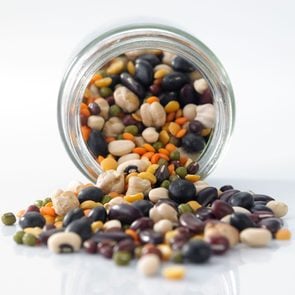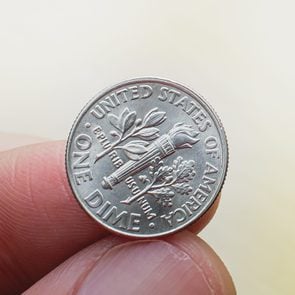Where Does the Saying “Tie the Knot” Come From?
Updated: Sep. 02, 2023

Before tying the knot, learn where this phrase really came from.
Did somebody say wedding season? I’m a sucker for a good love story. I mean, who isn’t? There’s just something so beautiful about two people actively choosing to spend the rest of their lives together. But there are so many wedding traditions we just go along with when we don’t actually know the true meaning. Why do we walk down the aisle? Why do we wear wedding rings on our ring finger? Why do we say “tie the knot?” If the last question piques your interest, it’s time to let the cat out of the bag. If you’re heading to a wedding soon, bring one of the best wedding gifts for the new couple that they will cherish forever.
What does “tie the knot” mean?
The phrase “tie the knot” means to get married. It could also mean to perform a marriage ceremony. You may say to someone, “Congratulations on tying the knot!” or “These two lovebirds are about to tie the knot.” But why do we say this? You also may be interested to know the history of bridesmaids—and why they all wear the same color at weddings.
“Tie the knot” origins
In the folklore of many cultures around the world, knots make an appearance as a symbol of unity. And while this phrase could stem from a symbolic knot, physical knots have actually been used in marriage ceremonies. The wedding tradition is called handfasting. It is an ancient Celtic practice that bands couples together with a piece of cloth tied around their hands.
Handfasting usually happens outdoors when couples say their vows in addition to the official ceremony. The most popular method is tying a knot for each vow. No worries; couples are able to keep the cloth at the conclusion of the practice as a reminder of what they promised.
While this practice originated in Scotland, you don’t need to be Scottish to add this event to your wedding ceremony. During the middle ages, handfasting was typically part of the betrothal or engagement period in order to further bond the couple before the official wedding.
Historians believe that around the 18th century, handfasting was actually a trial for marriage that lasted for a year and one day. If the bond lasted this long, then the wedding could commence. But as far as the evidence goes, this remains a myth.
Handfasting rituals were legally binding in Scotland until the Marriage (Scotland) Act in 1939 which changed the rules. It was once more recognized as legal in 1977 when the law was changed again. The ceremony is legally binding as long as it is authorized by the Registrar General. This is just one of those random, interesting facts that may have just blown your mind.
Synonyms for “tie the knot”
Getting hitched. Walking down the aisle. Take the plunge. Get spliced. Plight your troth. Become man and wife. All of these phrases have a similar meaning to “tie the knot,” yet all have different origins. But those are stories for another article. Regardless of which phrase you choose to use, make sure to wish the newlyweds a lifetime of unconditional love, health, and happiness. Now that you know the “tie the knot” meaning, read up on why we say “break a leg.”
Sources
- Dictionary.com: “Tie the knot”
- Mental Floss: “Where Does the Phrase ‘Tying the Knot’ Come From?”
- Culture Trip: Where Does the Phrase ‘Tie the Knot’ Come From?”
- Phrases.org: “The meaning and origin of the expression: Tie the knot”



